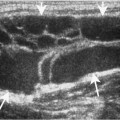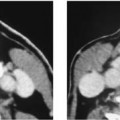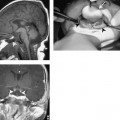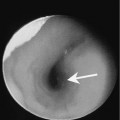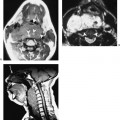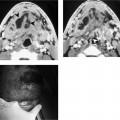Chapter 176 Congenital anomalies of the fourth branchial complex are very rare lesions. Although both have been reported, fistulous tracts are more common than cysts. Occasionally, branchial cleft cysts have been described in the mediastinum. These cysts may represent either fourth or sixth branchial vestiges. If the cyst is located under the aorta, it represents a fourth branchial anomaly. However, a cyst situated below the pulmonary artery is believed to represent vestigial remnants of the sixth branchial apparatus. Congenital anomalies of the fourth branchial apparatus are more frequently found on the right than on the left (9:1). There is no reported gender predilection. The fourth pharyngeal pouch has dorsal and ventral components. The dorsal portion develops into the superior parathyroid glands. These migrate caudally and come to rest along the dorsal surface of the thyroid gland. The ventral portion of the fourth branchial pouch forms the ultimobranchial body, which gives rise to the calcitonin-producing parafollicular cells (C cells). The fifth pharyngeal pouch is incorporated into the fourth pouch and may, in part, contribute to the formation of the ultimobranchial body. The course of a fourth branchial fistula is illustrated in Fig. 176–1
Congenital Anomalies of the Fourth Branchial Apparatus
Epidemiology
Embryology
Clinical Findings
![]()
Stay updated, free articles. Join our Telegram channel

Full access? Get Clinical Tree


